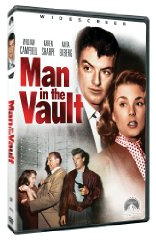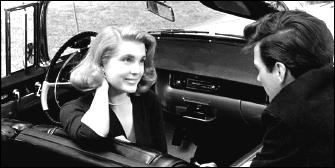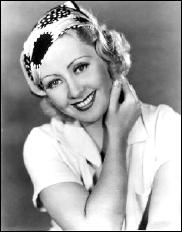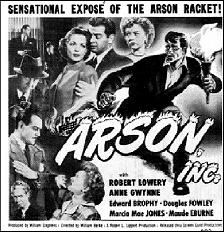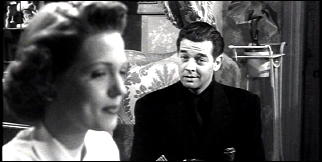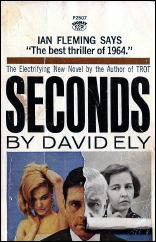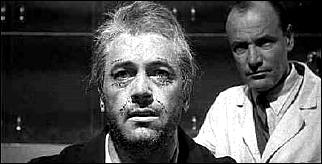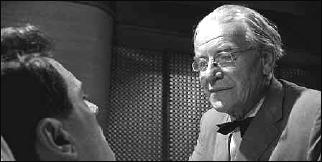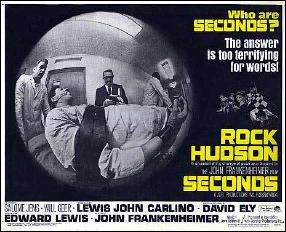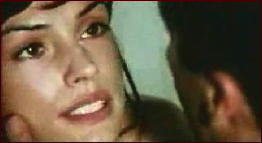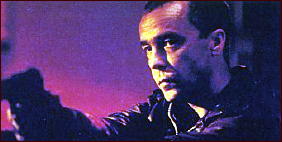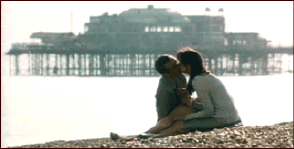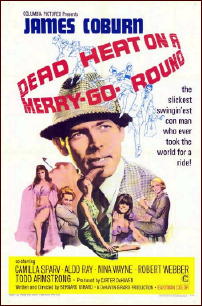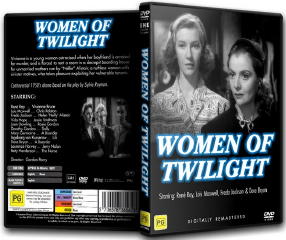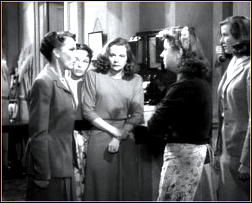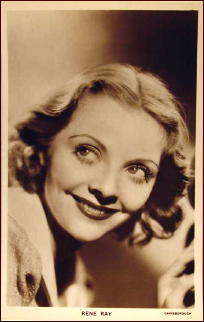A MOVIE REVIEW BY DAVID L. VINEYARD:
A TOUCH OF LARCENY. Paramount-UK, 1959. James Mason, Vera Miles, George Sanders, Harry Andrews, Robert Flemyng, Screenplay: Roger MacDougall with Guy Hamilton, Paul Winterton (aka Andrew Garve), and Ivan Foxwell, based on the novel The Megstone Plot by Andrew Garve. Director: Guy Hamilton.
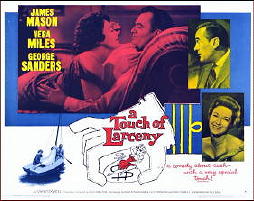
Money, is the root of all evil — and not a little comedy. It’s also the root of suave Commander Max Easton’s problems. Rammer Easton (James Mason), hero of the British submarine fleet, doesn’t have any — money, that is.
At least not enough to impress the beautiful American widow he’s just met, Virginia Kilane (Vera Miles).
Even worse she is engaged to Charles Holland (George Sanders), a supercilious snob and prig from the Foreign Office who does have money.
Up to now Max has been quite happy with his status as a playboy and his job at the Admiralty where he commands a desk. But now he is falling hard for Virginia, and she is quite frank she doesn’t intend to live on his Royal Navy salary or pension.
True love has its limits.
Which is the spur of a bright idea.
At this point the casual viewer should know two historical facts. The British have some of the strictest slander laws and the most irresponsible tabloid newspapers in the Western World, and all through the 1950’s those papers were filled with one story of treason and defection after another, culminating in the Kim Philby affair.

It might also help to know that in the mid-fifties Commander Lionel Crabb, a decorated Royal Naval expert in underwater demolitions, went missing while on a mission to photograph a Russian trawler underwater in a British port. (Crabb was played by Laurence Harvey in Silent Enemy, which is the story of his exploits battling German saboteurs planting mines on British ships in Malta, winning the Victoria Cross.)
The Crabb affair was never settled, but created headlines and speculation, and was treated fictionally in Noel Hynd’s The Khrushchev Objective (1987) a sequel of sorts to Brian Garfield’s best-selling novel The Paladin. (Both credit the pseudonymous Christopher Creighton as co-author.)
Now, having completed our little historical aside, back to our story.
The only valuable thing Max has access to is the Starfish project, a new nuclear submarine, but he’d rather not sell out to the Russians. (Neither prison nor exile on the Black Sea are appealing and Max is no traitor, just broke.)
Still it occurs to him as he is bantering with Virginia that if he were to somehow be accused of treason and then cleared he could sue the press for a fortune. Silly idea, and yet…
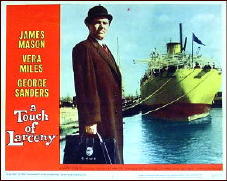
So Max manages to be seen with too much to drink at an embassy party with a Russian (who doesn’t speak a word of English), and then take his holidays, even selling his sports car before he leaves, and managing to lose the Starfish file behind an office cabinet before he goes.
He pointedly stops at a northern port and makes an ass of himself asking a policeman about a Russian trawler in port, and then he takes his sail boat, the Shelldrake, and goes sailing off of Scotland where he sinks himself marooning himself comfortably on a barren rock in the lonely Skerries, and waits for nature and the press to take their course.
And they do just that, with Max becoming the latest cause celebre. Too bad Virginia has let it slip to Charles about that clever little plan of Max’s. Now Charles wants to go to the police, but she persuades him it would cause a scandal. And anyway surely Max hasn’t gone through with it.
Back on the island Max decides the bait is well and truly set, and rids himself of his survival gear and goes to set the bonfire that will bring rescue. Which is the point where fate intervenes in the form of a seagull. Max takes a swim, his matches are wet, his fuel is sunk, and now he really is marooned and without supplies. Meanwhile his story has cooled and everyone has forgotten who Rammer Easton was.
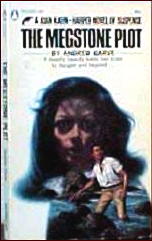
Which is why Max is both relieved and a little unnerved when his rescuers turn out to be two men from Scotland Yard’s Special Branch. Seems they got his message. The one he put in a bottle…
But he didn’t send one.
However Virginia did, when she realized Max was in trouble.
And then that old stick Charles in the mud goes to the police, just as everything is falling into place.
I won’t give away anymore, save to tell you Max gets the girl and the money and without breaking a single law — though he’s bent a few along the way.
A Touch of Larceny is based on the novel The Megstone Plot by bestselling British thriller writer Andrew Garve (Paul Winterton) who also wrote as Roger Bax and Paul Somers.
Garve’s best known books are The Ashes of Loda, The Cuckoo Line Affair, Ascent of D-13, A Hero for Leanda and A Hole in the Ground.
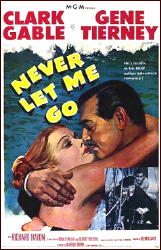
His best known book in the States was Two if by Sea (1949), filmed in 1953 as Never Let Me Go, directed by by Delmer Daves and starring Clark Gable, Gene Tierney, and Richard Haydn.
It’s about a pair of journalists trying to smuggle their Russian brides out of the Soviet Union in the post-war expulsion of the foreign press. (Garve himself was a former correspondent in Moscow and frequently used a Russian setting.) His novels are a mix of suspense, intrigue, and often humor like this one.
A Touch of Larceny is one of those films the Brits do effortlessly with expert casts and flawless scripts. Mason is at his most charming as the roguish Max, and Sanders even manages to bring a touch of humor to the otherwise annoying Holland. Miles has seldom been more attractive in the kind of role usually reserved for Deborah Kerr, Margaret Leighton, or Jean Simmons.
The laughs are of the quiet variety, and much of the films charm depends on Mason proving he should have done more comic roles. Watching this you can’t help but wonder if this is how he might have played James Bond (especially since director Hamilton would helm Goldfinger, the film that set the Bond phenomena in overdrive) if they had been able to convince Mason to do three films instead of two. (Cary Grant was offered the role first, but would only sign on for one.)
Smart sophisticated and with just enough kick to keep the plot moving A Touch of Larceny is like a good champagne cocktail — light and amusing, but you’ll remember it in the morning.




